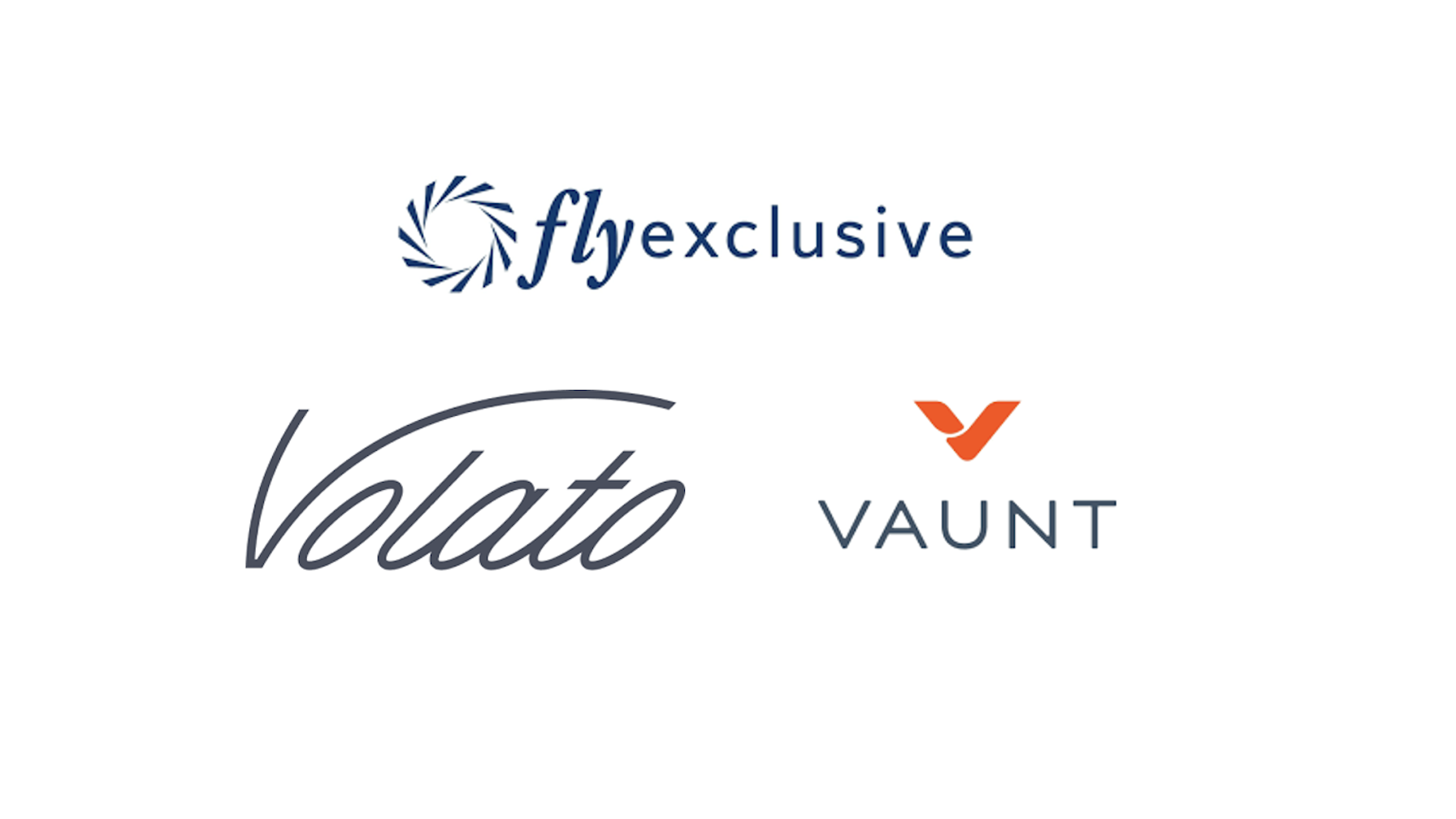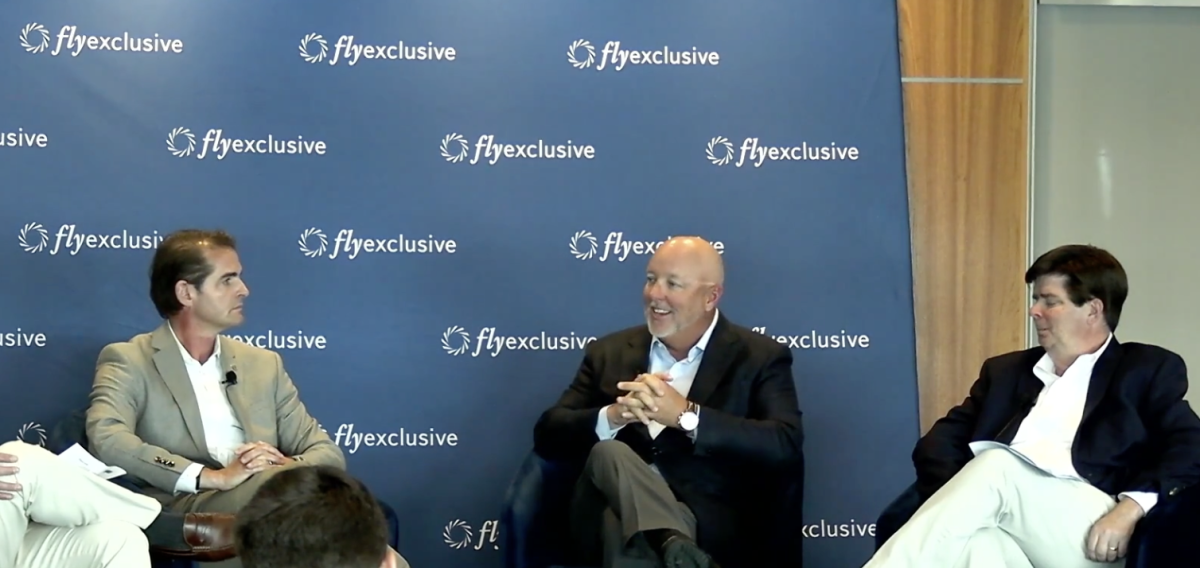
In less than 10 years FlyExclusive has grown into the 5th largest U.S. private jet operator. Here’s how it expects to continue its upwards trajectory.

Jim Segrave plans to be in the cockpit for a long time, and FlyExclusive’s upcoming IPO is a way he believes the operator can create a legacy business for the Kinston, North Carolina, community where his family has lived for over 150 years.
During an Investors’ Day presentation in New York last week, the founder and CEO told analysts he believes being a public company will provide the resources to ensure its mission – being part of a larger cause – that will offer generational work opportunities.
After selling Segrave Aviation to Delta Air Lines in 2010, he watched as the Atlanta-based airline eventually shuttered the Kinston operations.
The Eastern Carolina region has seen plenty of closures, mills, factories, and such.
When Segrave’s no-compete expired in 2015, FlyExclusive was born.
Since launching, Fly has grown to become the fifth-largest private jet operator in the U.S. based on fractional and charter hours.
There are currently over 800 employees, most of them in Kinston, and quite a few who worked at Segrave Aviation.
Plans call for growth to continue, but if you are looking for lots of sizzle or grand visions for the future, you would have wasted a couple of hours listening in.
The FlyExclusive story is a bit boring when it comes to IPOs.
There are no dreams of becoming an Airbnb or Amazon of private jets.
There were no slides with logos of Uber, Doordash, Netflix, or influencers with numbers on their millions of followers.
Visions of partnerships with credit cards and watch brands and the possibility of selling yacht charters and villa rentals were absent.
There was no promise of driving consolidation through multiple acquisitions nor visions of setting up shop in Europe, the Middle East, or Asia.
In fact, it was quite the reverse.
Here’s what FlyExclusive is planning:
Technology investments are targeted at making operations more efficient for the operator and customers.
One of Fly’s tenets is “minutes matter.”
To that end, instead of solving the puzzle of how to digitalize the charter industry, FlyExclusive is investing in technology to get customers from curb to runway faster.
The new customer app lets pilots see when the client approaches the FBO.
That way, the first officer can go to greet the passengers. At the same time, the captain readies their airplane for departure, saving the usual getting to the FBO front desk, waiting a few minutes, and then having to wait while the counter staff finds your pilot, the wait for your pilot to come and meet you.
FlyExclusive has been growing fast, and there are no signs it intends to let its foot off the pedal.
From $99 million in revenues in 2019, Fly clocked $320 million in 2022, projects $367 million this year, and $521 million in 2024.
During that same time, it has grown its fleet from 45 jets in 2019 to 91 at the end of 2022, an expected 110 by the end of 2023, and 127 by the end of 2024.
Growth has been via acquiring and refurbishing preowned jets and long-term triple net leases, which it also refurbishes and paints in its color scheme.
Fly intends to keep growing not by outsourcing but by flying customers on its airplanes.
While Wheels Up pitched an asset-light vision of using its own fleet and third-party operators in its IPO, FlyExclusive will continue with its strategy of flying 99% of customers on the airplanes it operates.
That enables it to control the experience and offer consistency with its airplanes, standard interiors, and pilots.
It has room to grow its direct clients.
Currently, Fly has eight retail customers per aircraft, whereas competitors have 20 to 59, according to the presentation.
Part of its capacity to grow direct customers is that until 2019, Fly was mainly a wholesale business.
Back then, 95% of sales were to brokers and other operators. Even this year, wholesale (including GRPs for other jet card programs) is still expected to be 52% of revenues.
It expects that to drop to 41% in 2024 on a percentage basis, although on a net basis, it infers $213 million in wholesale business versus $190 million this year.
Jet Club, its jet card, which was launched in 2020 and was just 4% of revenue then.
Last year it made up 24% of revenues and is projected to be 36% this year and grow to 42% in 2024.
In other words, Fly expects to do around $132 million in jet card sales this year and $219 million in 2024.
Its new fractional program, which is expected to be 3% of revenue this year, is projected to be 11% next year.
Despite the big focus on fractional and jet cards, next year Fly expects to still only have around 14 retail customers per tail.
There was no mention of the democratization of private jet flights.
Segrave says growth in the overall charter and the fractional market is incidental to FlyExclusive.
The company’s strategy, he says, isn’t about growing the market – although if that happens, it’s a good thing.
Segrave said FlyExclusive’s growth was and will be based on stealing market share, converting flyers from other programs, and retaining them.
That said, it’s forbidden to poach customers from wholesale accounts, he told analysts.
50% of program new program customers come as referrals from current program customers, and Fly is retaining 90% of those program customers.
That means lower marketing costs.
Fly has historically spent about 1% of its revenues on marketing, something it plans to continue. In its IPO presentation, Wheels Up was spending around 6%.
While Fly allows jet card customers to book flights at 24 hours notice, there is a surcharge.
The standard callout is 96 hours, and Segrave says most customers book even further in advance.
He says by having a 96-hour notice period instead of 24, 48, or 72 hours, Fly can better organize a profitable line of flying.
It uses wholesale business to fill in the gaps and cut loss-making empty legs.
It also means its nationwide floating fleet is within 90 minutes of the next revenue flight.
That will enable Fly to pick up new customers who were unprofitable for Wheels Up in the Midwest and Pacific Northwest.
FlyExclusive’s investment has been both building its fleet and in maintenance, paint, and refurbishment facilities. In the future, it will bring pilot training in-house.
Currently, pilots must wait upwards of a month for training slots.
Since 2021, Fly has opened over 100,000 square feet of in-house maintenance, interior, and paint facilities, including a 48,000-square-foot maintenance hangar, which operates 24/7.
Having its maintenance and refurbishment in-house means faster repairs.
That cuts the time airplanes are on the ground and not producing revenue.
Having in-house refurbishments, including upholstery and dozens of artisans, means it can make minor repairs to cabins keeping them in nice condition.
That is a challenge for charter and fractional aircraft, which are heavily used.
Fly’s entry into fractional is a $600 million commitment with Textron Aviation, according to Segrave.
Its first fractional aircraft – Citation CJ3+s arrive later this year.
Unlike other fractional start-ups, Fly already has a core fleet with its charter aircraft. With its low ratio of retail customers to tails, it has the capacity to accommodate fractional customer guarantees.
Segrave said 82% of the Fly fleet is refurbished, and it is refurbishing three airplanes per month.
It’s also offering a different twist on fractional using its daily access fee model instead of a monthly management fee.
Of course, with any new program, the jury is out.
One aspect of Fly that’s noticeable is they do things their own way.
Jet Club has a unique daily access fee model.
It provides the most favorable pricing for the most efficient flying. For example, multiple flights on the same day, regardless of where you start and end, and longer flights provide the best pricing.
Its international repositioning is also unique. Depending on where you are flying from and to, it can be very cost-effective.
Its more recent Platinum version of Jet Club targets flyers who don’t want to pay peak day surcharges or face fuel variables.
Segrave ended the investor call by teasing that a new program is coming, perhaps as early as this week.
Summing it up, Fly aims to be a reliable charter and fractional operator.
Its products and pricing will enable it to attract customers from competitors.
It believes in vertical integration. It thinks by eschewing acquisitions, it can continue to scale its growth and take share without running into the operational problems of other providers.
The IPO, which is via a SPAC merger, is expected to happen in August or September.